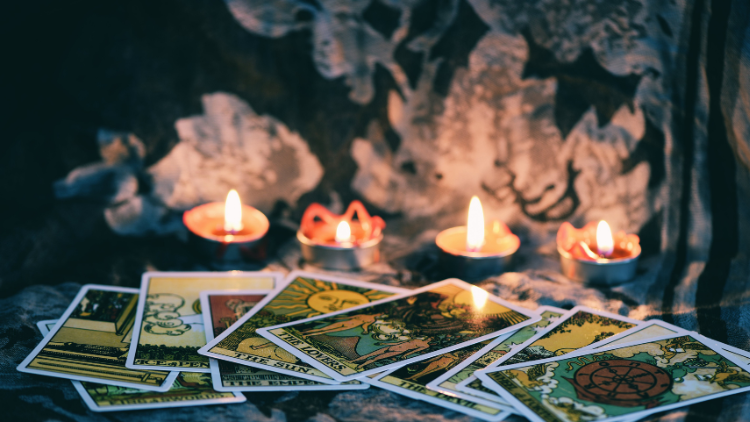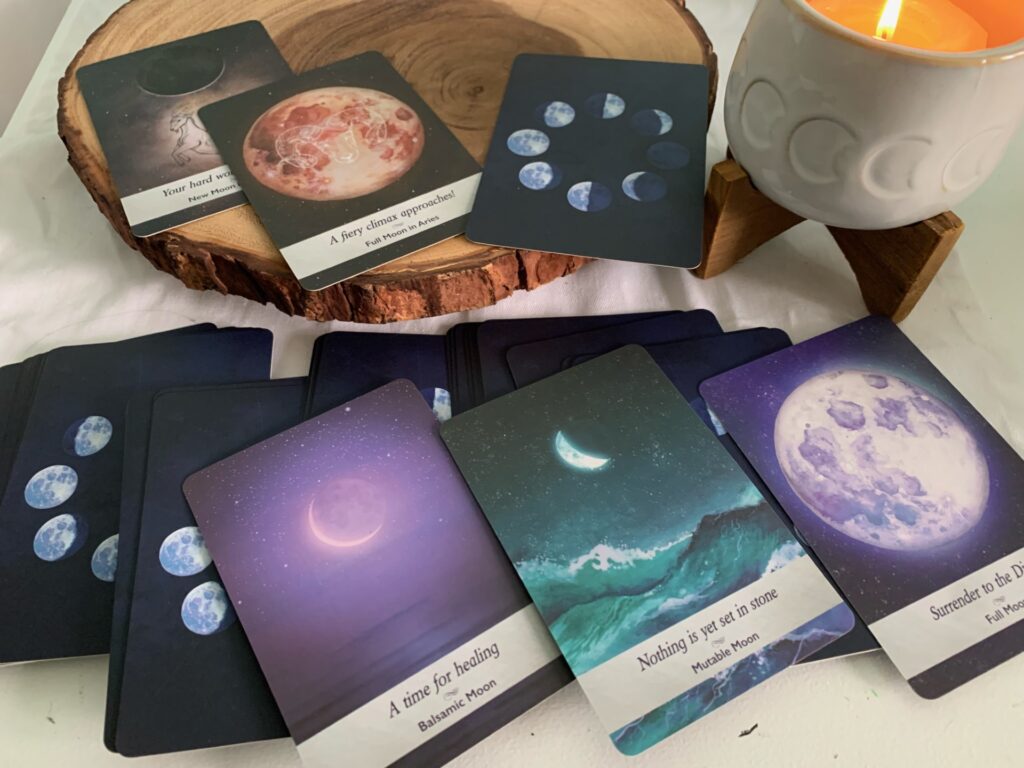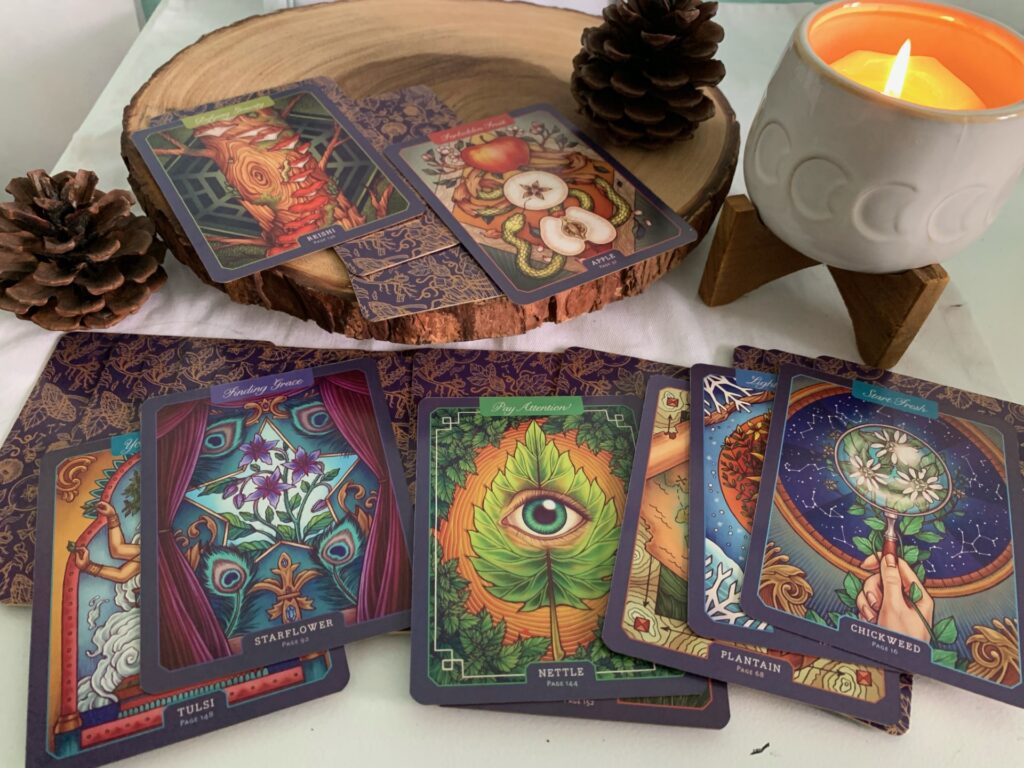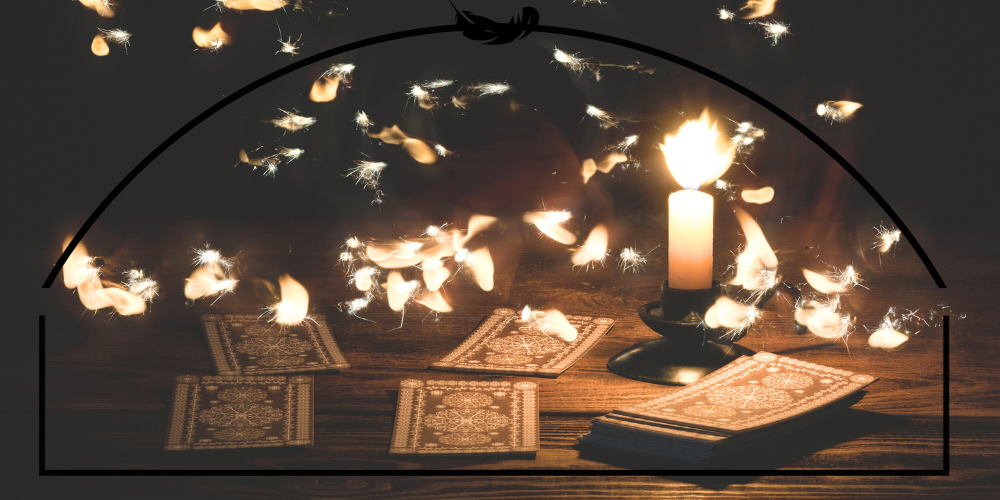2023 Update
This post gets a LOT of views so I think it’s important to add an update to share that my views on this topic have evolved since I first wrote this post. I no longer see tarot as a closed practice. I do think, however, that we need to be aware of how history has demonized communities like the Romani for using tarot and work to support the Roma community through decolonization. Just because a bunch of middle class white ladies have “normalized” the cards doesn’t mean that that oppression and stigma is erased. I also think it is VERY important that we know how the Golden Dawn incorporated Kabbalah into the Rider Waite deck, which is the foundation of a large majority of decks out there, which still makes it problematic given the antisemitism in the western magical tradition (now and then). I don’t know how to “undo” those histories. I don’t think we can. I do think though, that there are ways to honour this knowledge and do better going forward. For me, that includes making this history visible, acknowledging its impacts, striving to decolonize my practice (and being open about that process – even the mistakes I make along the way), as well as making reparations.
My Tarot Relationship
I have loved tarot for many years. From my first deck, which was the Haindl tarot, to my latest deck, This Might Hurt, I have been reading cards (for myself and the rare friend) for over 20 years.
But I’ve recently I’ve learned that despite potentially being invented as an Italian card game, the Arcana system and formula for reading a traditional deck is considered by some Romani to be a closed Romani practice developed by them and one in which the Romani people have faced a lot of prejudice around. Google searches and books may tend to tell us otherwise if we only scratch the surface, but that doesn’t make that information accurate. Romani culture has long been diasporic because of persecution, thus their history tends to be oral. And while the western European narrative prioritizes the written word as fact; we must remember that the written narrative is always written by those in power. There is a need to go beyond the first few hits or the white centric books published on the issue to get to the heart of the discussion.
Defining a Closed Practice
What is a closed practice you ask? Good question. Loosely put, as a white settler, my understanding is this: essentially closed systems mean that the tradition is considered closed to outsiders, or those not initiated into it from someone within the tradition. Note that an outsider to the cultural tradition initiating other outsiders is also incredibly problematic.
Working with the Orishas and Hoodoo; the Kabbalah; Yoga; Santa Muerte, Catrina Sugar Skulls (La Calavera Catrina); and smudging, animal totems and so many other Indigenous practices are just a few examples of closed and/or appropriated practices that are all too often adopted by new age and pagan practitioners without realizing the harm adopting them does to the cultures they came from.
In fact, the very practices we tend to adopt are often ones that the very same culture has experienced oppression and persecution over, making it incredibly triggering to see it being appropriated and celebrated out of context.

I am learning that my beloved Tarot also falls under this category. There is mixed information on the webs about tarot and even within the Romani community from what I understand. Essentially, what I’ve learned is that some Romani feel that as long as we aren’t selling readings, it’s ok to use the Tarot; but others feel that it is closed and should be stopped completely.
And I won’t lie, it’s not an easy idea to give up a practice I love so much. However, as someone who really believes in dismantling colonialism and oppression, I’m determined NOT to be that person. If the Romani tell me that this is a closed practice and that seeing white women practice it without societal backlash is hugely triggering, then I will respect that and listen. I will give up my Tarot cards and the work I do with them (from Pathworking to “Qabala”) in order to decolonize my practice. This will involve a HUGE shift in my practice and undermine the backbone of most of my traditional teachings. But I promised myself that would walk the talk. I would learn to be a trustworthy white settler. I don’t ascribe to motto “Harm None” but if I did, this dismantling work would integral to the realization of said motto!
Don’t worry though, I don’t have to give up all my practices.
Alternative Options
Phew, good news! Not all forms of cartomancy divination are closed, it’s just decks based on the standard 78 card tarot with a major and minor arcana, roughly based on the playing card system. If cartomancy still appeals, Oracle decks are an open tradition that can be chosen, with the caveat of course to select oracle decks free of cultural appropriation or problematic associations. Because, let’s be honest, choosing an oracle deck that is problematic isn’t going to be any better than sticking with the tarot. So those shamanistic, animal spirit oracle decks also won’t be part of my practice.
These are the 2 oracle decks that I currently have that I’ll be switching over to:

Moonology by Yasmin Boland
I appreciate that the Moon Oracle deck is made of high quality cards and allows me to develop more knowledge of lunar cycles and associations. Astrology is something I’m already somewhat familiar with and this deck allows me to hone this skill. The language of it makes sense to me so even though I don’t find the images super evocative (they’re beautiful but they don’t trigger an intuitive reading based on the imagery). I do think that they will end up being my main deck going forward, which I think is great because astrology and lunar cycles are something I’m actively working with these days.

The Illustrated Herbiary Oracle by Maia Toll
The past year I’ve really been working with plants and the Illustrated Herbiary appeals to me because it feels based on the lessons that plants offer us. For example the idea of perseverance being associated with Dandelion. The oracle draws on White Sage and Tulsi though, so there may be some issues with it that I have to examine. Also, the quality of the deck isn’t great. It’s ok, but the cards are thin and the edges are sharp (this will fade with use of course). Otherwise I think it’s a lovely deck that I’m looking forward to getting to know.
I’ve also ordered another Oracle deck that I’m looking forward to getting to know. I found the imagery to be super evocative to me personally, so I’ll update more when I get the cards.
Other posts where I explore working with the tarot: 8 of Swords and 9 of Pentacles


Convert to Asatru, adopt Runes, and problem solved. See Arith Hargers website. P.S. I am not Asatru.
Alas, Asatru holds no appeal to me so not really a viable option 😉
Regardless of various myths that tarot developed in Ancient Egypt, Persia, India, Jewish mysticism and/or with the Romani people, it didn’t. Tarot developed from playing cards, which themselves originated in Ancient China.
China invented paper, so it’s unsurprising that playing cards were first invented there in the 9th century. The cards travelled west by way of various Turkic peoples, most notably the Mamluk Sultanate that ruled over the Eastern Mediterranean countries between the 13th and 16th centuries.
With the founding of the Sultanate, the Mamluk deck of cards quickly spread to Europe and became instantly popular, spreading across the continent. With no printing press, people first created their own cards or commissioned artists to make them, but once the printing press had spread in turn across Europe, card decks were regularly printed and distributed.
By the end of the 14th Century, cartomancy as a practice had developed. However, the use of cards to tell fortunes really soared in popularity from the 18th Century onwards.
Tarot itself originates in the noble courts of Northern Italy in the 15th Century and incorporates the pips and courts from the old Mamluk playing card deck, adding the ‘trumps’ or ‘triumphs’ that, much later on and much changed, came to be known as the Major Arcana.
The cards, however mystical they may seem to modern eyes, were designed for gaming and gambling. The word ‘Tarot’ comes from the Italian ‘Tarocchi’, the name of the game played with the cards, which probably relates to a word that meant ‘foolishness’. The game is still played today in much of Europe and remains popular.
Tarot decks didn’t begin to be commonly used for divination purposes until the 18th century when the craze for cartomancy in general began to grow. The first tarot deck meant for occult purposes was published in 1789. Over this time period, the meanings and symbology of the cards developed rapidly with many variants.
The ideas of this expansive period became more locked in place after the formation of the Hermetic Order of the Golden Dawn and subsequently the creation of two seminal tarot decks – the Rider Waite Smith deck and the Thoth deck – in the early 20th Century. Modern tarot was born.
That the Romani people are so associated with tarot is mainly the fault of two 18th century Frenchmen. Antoine Court de Gébelin, a clergyman and influential Freemason with a strong interest in mysticism, came up with the idea that tarot had to have originated in Ancient Egypt. Ancient Egypt was believed to be the birthplace of all things mystical at that time in Western Europe, and seeing as the cards used a wealth of mystical imagery, Court de Gebelin assumed that the cards must have come from Ancient Egypt despite having no evidence for his assertion whatsoever.
It was J. A. Vaillant, however, an avid student of Romani lore, who promoted the idea that it was the Romani people who brought tarot to Europe. The common misapprehension at the time was that the Romani originated in Egypt, hence the word ‘gyspy’, now considered a slur. (In fact, genetics and linguistic research both prove that the people originate in the northern Indian subcontinent.) It seemed obvious to Vaillant that it must have been the Romani people, therefore, who brought tarot from Ancient Egypt to the west. Again, he had no evidence for his assertion whatsoever.
Romani women in Europe have a tradition dating back at least few hundred years of selling divination and hedge witchery to non-Romani. They offered this service using tools already in common use in Europe – crystal balls (which date back to, at the very least, Roman times) and cartomancy – as well as palmistry, which probably did come from India via the Romani. There is no evidence at all that the Romani used cards for this purpose before the 18th century. The Romani may not have had a written tradition, but the people they sold readings to certainly did.
There is a very long tradition of disadvantaged people making money in return for magic spells, messages from departed loved ones and promises of fortunes to be made. These people have never been exclusively Romani. For almost as long as people have existed, fortune telling and prophecy have also existed. Fortune telling in general was practised in Europe long before the Romani people arrived in the 14th Century. Ancient Greece and Rome had many professional fortune tellers, but there is plenty of even earlier evidence for the practice.
The Romani fortune tellers of the past few hundred years definitely used playing cards and almost certainly used tarot and other fortune telling decks too if they could afford them or could make their own. They nonetheless neither invented tarot nor were responsible for introducing it to Europe where, in fact, it was invented.
Thank you for the information. Some of it I knew already, some of it was new to me (China and paper card playing for example). It’s funny to me how much this particular post gets noticed – I have actually come to different opinions since originally writing it. While I don’t see tarot as potentially closed, I do see how white ladies (of which I am one) with their culturally accepted use of tarot could be a sore spot for many Romani people who have been stigmatized over their use of fortune telling to make a living. At this point in my practice, I see it as more important to acknowledge that history and oppression than to actually see the cards as closed per se.
I appreciate your clear and succinct reply to what I feel might be wandering into knee jerk reaction /claims of appropriation and colonizing behavior.
This is really useful information! I’m writing a book, expanded from my master’s thesis in Expressive arts therapy, on the phenomenological use of the tarot in therapeutic work. I’m intrigued to know the source of your information (I swear I’m not being lazy; just practical. I have dozens of sources claiming all kinds of things from different angles and only so much time and energy to investigate every single one!).